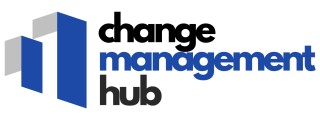
Understanding Equipment Lifecycle
Comprehending the Full Cycle of Equipment Usage
Navigating the complexities of the equipment lifecycle is essential for effective asset management. Organizations must understand how equipment moves through its various phases, from acquisition to eventual replacement, to optimize performance and cost efficiency. The lifecycle of equipment begins with the acquisition and installation, followed by phases that include both operation and routine maintenance. In the operation and maintenance phase, equipment is utilized to support business operations. Regular maintenance is critical here, and can include preventive maintenance practices aimed at extending the assets' service life. Diverse methods, such as life eol management and third party maintenance partnerships, can be employed to ensure equipment reliability. As assets age, deteriorations may occur, necessitating increased maintenance and potential lifecycle management adjustments. Capturing and analyzing real-time data regarding equipment usage and performance informs these decisions, allowing managers to plan for the equipment's next stage, potentially entering the more complex end-of-life phase. The end-of-life phase is marked by decisions around whether to repair, replace, or dispose of equipment. At this stage, strategic planning becomes vital, ensuring continuity in operations without unnecessary interruptions or expenses. Resources and insights for understanding this terminal stage can be accessed through exploring the impact of corporate service corps on change management, a valuable asset in comprehending change dynamics. Successfully navigating the equipment lifecycle not only requires strategic foresight but also proficient knowledge of asset lifecycle management, lifecycle data interpretation, and process optimization. Mastery in these areas leads to enhanced efficiency and productivity in any organization.Challenges in Managing Aging Equipment
Identifying the Hurdles of Aging Equipment
As equipment progresses through its lifecycle, organizations face a myriad of challenges that can impact their operations and bottom line. Understanding these challenges is crucial for effective asset management and ensuring the longevity of equipment life.
Maintenance and Operational Costs
One of the primary challenges is the increase in maintenance and operational costs. As equipment ages, the frequency and cost of repairs tend to rise. This can strain the maintenance budget and divert resources from other critical areas. Implementing a robust preventive maintenance strategy can help mitigate these costs, but it requires careful planning and execution.
Technological Obsolescence
Another significant challenge is technological obsolescence. As new technologies emerge, older equipment may no longer be compatible with current software or hardware systems. This can lead to inefficiencies and reduced productivity. Organizations must evaluate whether to upgrade existing systems or invest in new equipment to stay competitive.
Data and Lifecycle Management
Effective data management is essential for tracking the lifecycle of assets. Without accurate data, it becomes difficult to predict when equipment will reach its end of life (EOL) and plan for replacements. Utilizing management software can provide real-time insights into asset lifecycle and support decision-making processes.
Impact on Business Operations
Aging equipment can also impact business operations by increasing downtime and reducing the reliability of services. This can affect customer satisfaction and the organization's reputation. To address this, businesses should develop a comprehensive lifecycle management plan that includes regular assessments and updates to their equipment.
For more insights on managing these challenges effectively, consider exploring strategies for balancing creativity and time management in change management.
Strategic Planning for Equipment Replacement
Crafting a Robust Replacement Strategy
Planning for equipment replacement is a critical component in managing the lifecycle of assets. In the context of asset management, it is paramount to have a strategic plan that aligns with the overall business goals while ensuring continuity and minimal disruption. This involves a comprehensive understanding of the equipment lifecycle, including its operation, maintenance, and eventual end of life (EOL). Effective planning requires:- Lifecycle Assessment: Conduct a thorough assessment of the equipment’s lifecycle to determine when a replacement should occur. Utilize lifecycle management software tools that provide data-driven insights for accurate predictions.
- Data-Driven Decisions: Leverage real-time data analytics to track equipment performance and potential failures. This helps in understanding when hardware is approaching its service life ending and when it may require replacement or overhaul.
- Preventive Maintenance: Implement preventive maintenance schedules to extend the service life and verify that equipment runs smoothly until its planned replacement date, thereby optimizing life cycle management.
- Cost-Benefit Analysis: Conduct a cost-benefit analysis to balance the costs associated with repairs, third-party maintenance services, and new equipment purchase. This will assist in decision-making, determining the most cost-effective approach to lifecycle management.
- Stakeholder Collaboration: Engage with stakeholders early in the management process to ensure alignment with organizational objectives and secured support for resource allocation.
- Risk Management: Preemptively identify risks associated with extended hardware lifecycle and plan mitigating strategies to avoid operational disruptions.
Change Management Techniques
Implementing Effective Change Management Techniques
In the realm of equipment lifecycle management, change is inevitable. As organizations strive to keep their assets in optimal condition, the transition from one phase of the lifecycle to another requires careful planning and execution. Change management techniques play a crucial role in ensuring that these transitions are smooth and effective.
One of the first steps in implementing change management is to establish a clear understanding of the current state of your equipment. This involves gathering data on the service life and performance of your assets. With this information, you can identify which equipment is nearing the end of its life cycle and requires attention. This data-driven approach allows for informed decision-making and strategic planning.
Developing a Comprehensive Change Management Plan
A comprehensive change management plan should outline the steps necessary to transition from old to new equipment. This includes identifying the resources required, such as new hardware or software, and determining the timeline for implementation. It is essential to consider the impact on business operations and ensure that there is minimal disruption during the transition.
Preventive maintenance plays a significant role in extending the life of your equipment. By incorporating regular maintenance into your change management process, you can reduce the risk of unexpected failures and prolong the service life of your assets. This proactive approach not only supports the longevity of your equipment but also aligns with best practices in asset management.
Engaging Stakeholders and Communicating Effectively
Effective communication is a cornerstone of successful change management. Engaging stakeholders early in the process ensures that everyone is on the same page and understands the reasons behind the changes. Regular updates and transparent communication help build trust and support for the change initiative.
Involving third-party maintenance providers can also be beneficial. These experts can offer valuable insights and support throughout the equipment lifecycle, helping to manage the transition more efficiently. By leveraging their expertise, organizations can ensure that their change management efforts are well-supported and aligned with industry standards.
Ultimately, the goal of change management in equipment lifecycle management is to ensure that transitions are seamless and that the organization continues to operate efficiently. By implementing these techniques, businesses can navigate the complexities of equipment lifecycle changes with confidence and success.
Stakeholder Engagement and Communication
Importance of Engaging Stakeholders in Equipment Lifecycle Management
Effectively managing the equipment lifecycle in an organization requires active involvement from all stakeholders. This not only ensures smoother transitions but also supports the ultimate goal of optimizing asset management. A key part of this process is identifying and working with the right stakeholders, such as asset managers, technicians, and procurement officers, throughout the equipment's life cycle. Consistent engagement with these parties aids in gathering vital data regarding the equipment's performance, maintenance requirements, and eol considerations. Bullet points can be helpful here:- Asset Managers: Responsible for the overall life cycle management, ensuring equipment is in line with organizational goals.
- Technicians: Focused on operation and maintenance, they have firsthand knowledge of equipment life and real-time issues.
- Procurement Officers: Play a critical role in planning and purchasing new assets, requiring updates on product lifecycle.













